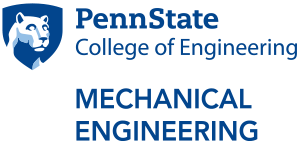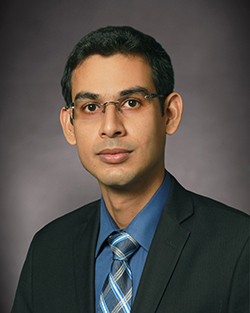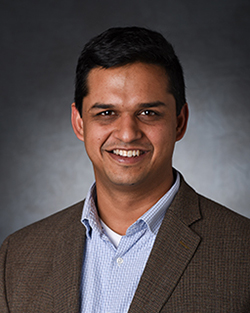Engineers work to improve customization of orthopedic implants using 3D-printed titanium
March 1, 2018
UNIVERSITY PARK, Pa. – A team of engineers at Penn State is working to improve the fit and longevity of orthopedic implants by producing the parts out of titanium using additive manufacturing, which allows for more customization than traditional manufacturing techniques.
Guha Manogharan, assistant professor of mechanical engineering, and Saurabh Basu, assistant professor of industrial engineering, are working on the multi-disciplinary project titled, “High Precision In-Situ Testing to Improve Advanced Manufacturing.” The pair recently received funding as part of the College of Engineering’s Research Seed Grant Program.
The Orthopedic Implants Market Study forecasts a 58 percent increase in the market size in the next 5 years and one-third of the market is accounted for by reconstructive joint replacements. Manogharan and Basu recognized the need for custom implants to be produced according to a patient’s size, age, bone structure, etc., rather than the generalized fitting that is used today.
Manogharan relates orthopedic replacements to when someone wants to look nice and uses tailored fitted suits or dresses for a big life event – a wedding, a graduation. “We want something that fits us well, that we are comfortable wearing,” he said. “When someone needs a joint replaced, shouldn’t we think of that implant the same way, instead of having to choose from standard design, say small, medium or large models?”
Manogharan's interest in the topic goes beyond the desire to make an impact on the population that relies on these implants to have a better quality of life; his own father needed a shoulder implant following a motor bike accident a few years ago.
“This is hardware people have inside them for the rest of their lives so we shouldn’t rely on standard sizes, rather these designs should be custom fit. The capabilities of additive manufacturing, particularly using titanium as the material, allow us to model an implant that fits a patient true to form, that is comfortable, that accounts for their age and bone structure, and that will also last for the rest of their lives,” he said.
One issue that the researchers are mindful of is the wear of these titanium parts as they rub against each other, in the case of a joint replacement.
“To make a custom-designed orthopedic implant that can last a lifetime within the patient, we need to know how the implant will behave inside the human body,” explained Basu. “Among other things, this will involve a thorough understanding of how the implant wears over the years. Unfortunately wear is an extremely complicated phenomenon that takes place inside a very tiny zone, much smaller than the thickness of a hair.”
Basu went on to note that the zone is too small to see through the naked eye and the phenomenon itself involves fundamentally different physics than what engineers are used to seeing.
“Research funding from the College of Engineering will allow us to study this phenomenon using electron microscopy. This will enable tuning of the design and material of the implant, significantly improving chances of a successful joint replacement,” he said.
Beyond the fundamental biomedical application of the project, the research and methodology being used can be extended to other applications that may use machining to create 3D-printed metal parts.
“What we hope to achieve is to be the pioneers in linking the inherent nature of additive manufacturing materials and asserting performance in a conducive environment [such as a custom implant],” said Manogharan.
Manogharan, who holds a courtesy appointment in the Harold and Inge Marcus Department of Industrial and Manufacturing Engineering, brings his extensive experience in design and additive manufacturing to the project, while Basu’s expertise lies in characterization and modeling at the micro level.
“I am very excited about the partnership. Guha and I have great chemistry, and a day in the lab feels like playing with a buddy from childhood. We are very motivated to make a difference,” said Basu.
The team is leveraging state-of-the-art capabilities that are available to Penn State researchers through the Material Characterization Lab in the Millennium Science Complex while working on the one-year project.




